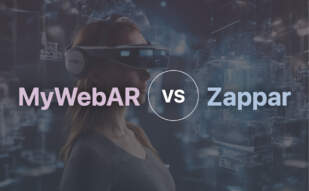- Ease of Access & User-Friendliness of Web AR
- Transformation of Manufacturing Sector
- Efficient Resource Utilization
- Improved Engagement & Customer Connection
- Steamlined Updates and Fast Product Deployments
- Wide Compatibility Range of Web AR Experiences
- Exploring Healthcare Applications of Web AR
- Redefining the Retail Experience
- Influence on Education and Training
- Boosting Tourism Through New Mediums
Web Augmented Reality (Web AR) benefits businesses by enhancing user access and experience, optimizes resource utilization, and increases customer engagement. It provides rapid deployment, wide compatibility, and has impactful applications across industries like healthcare, retail, education, tourism, and manufacturing.
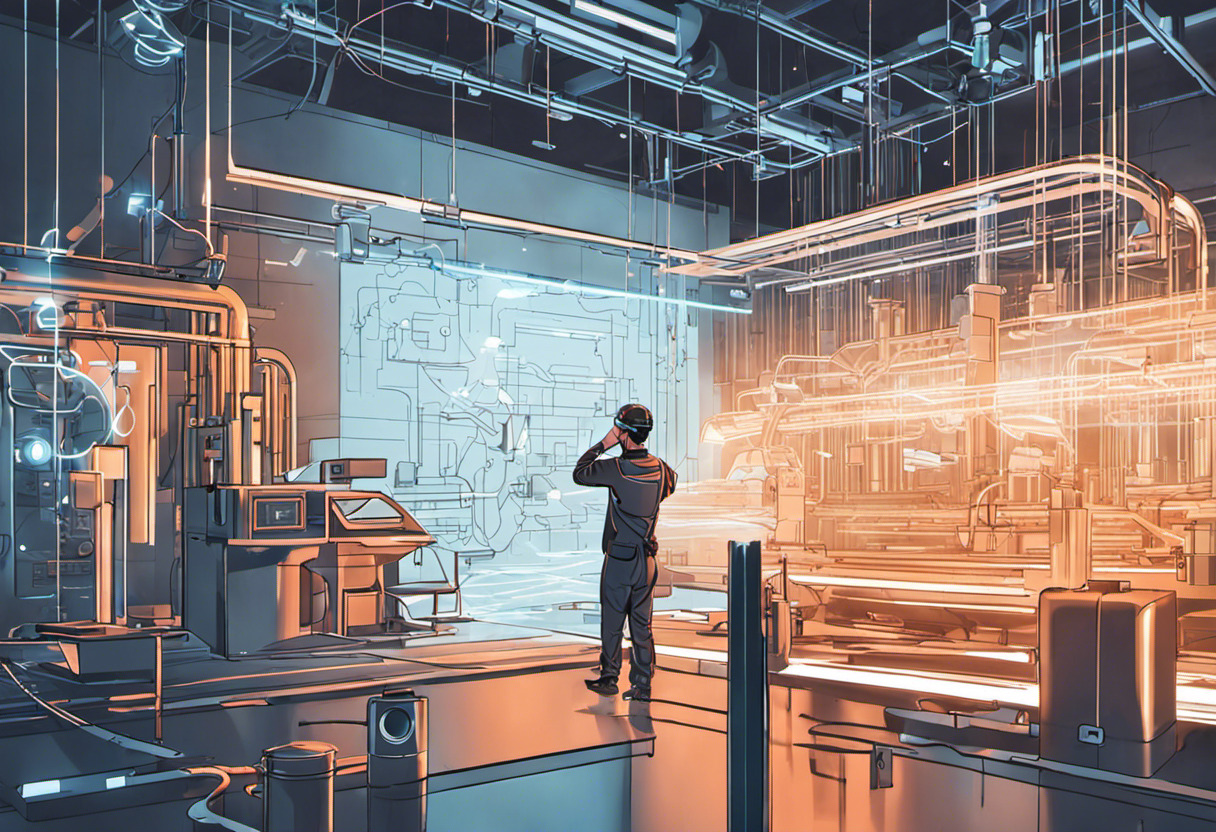
In this article, you’ll gain comprehensive insights into each key advantage of Web AR, its distinct edge over traditional AR apps, and how various sectors are leveraging it for transformational changes.
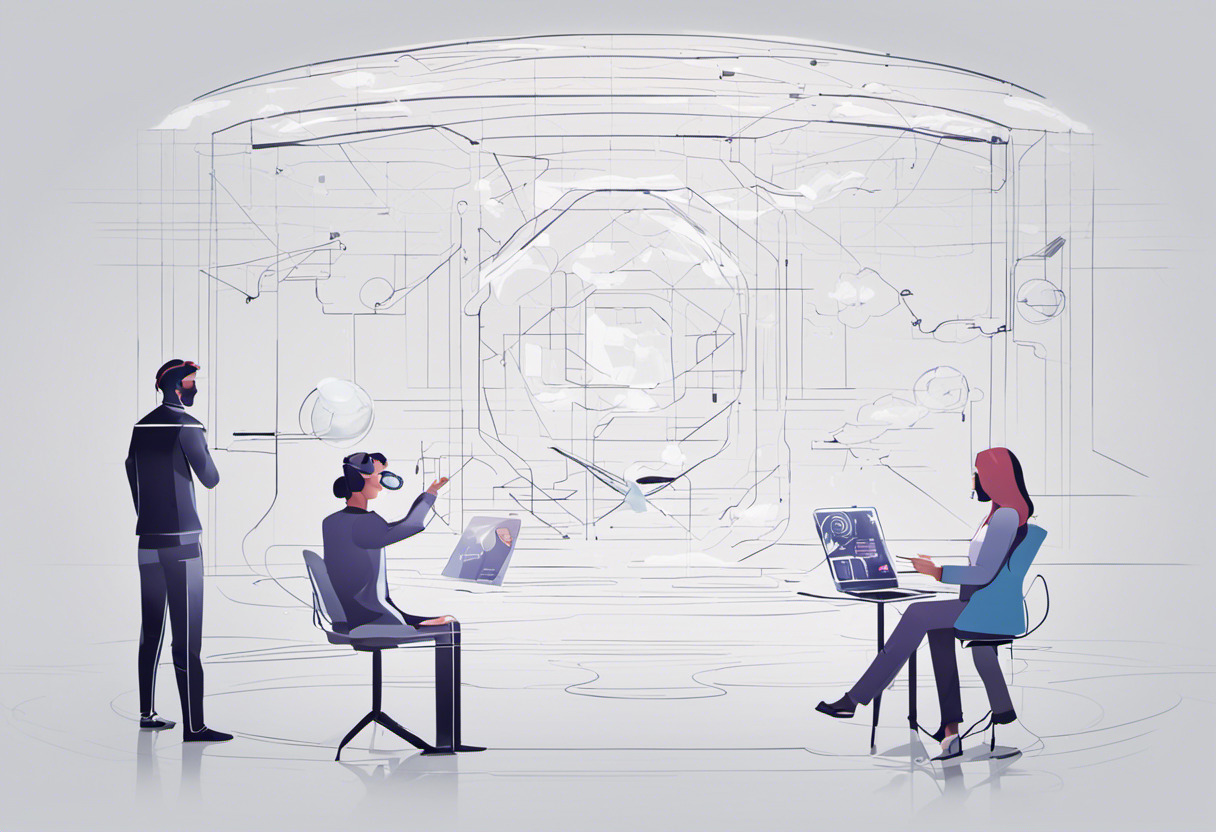
Ease of Access & User-Friendliness of Web AR
The initial appeal of Web AR is, without doubt, its accessibility and user-friendliness, which makes it an attractive option for businesses. Notably, this technology relies on browser-based platforms to deliver Augmented Reality experiences, drastically reducing the auxiliary burden on users.
A Browser-based Solution
One of the critical attributes of Web AR is that it eliminates the need for additional software or hardware installations. Unlike traditional AR apps that require users to download or purchase specific data-consuming applications, Web AR enables users to access AR experiences directly via the internet using their browser. This feat could lead to a potential increase in audience reach, as more users find this process more accommodating.
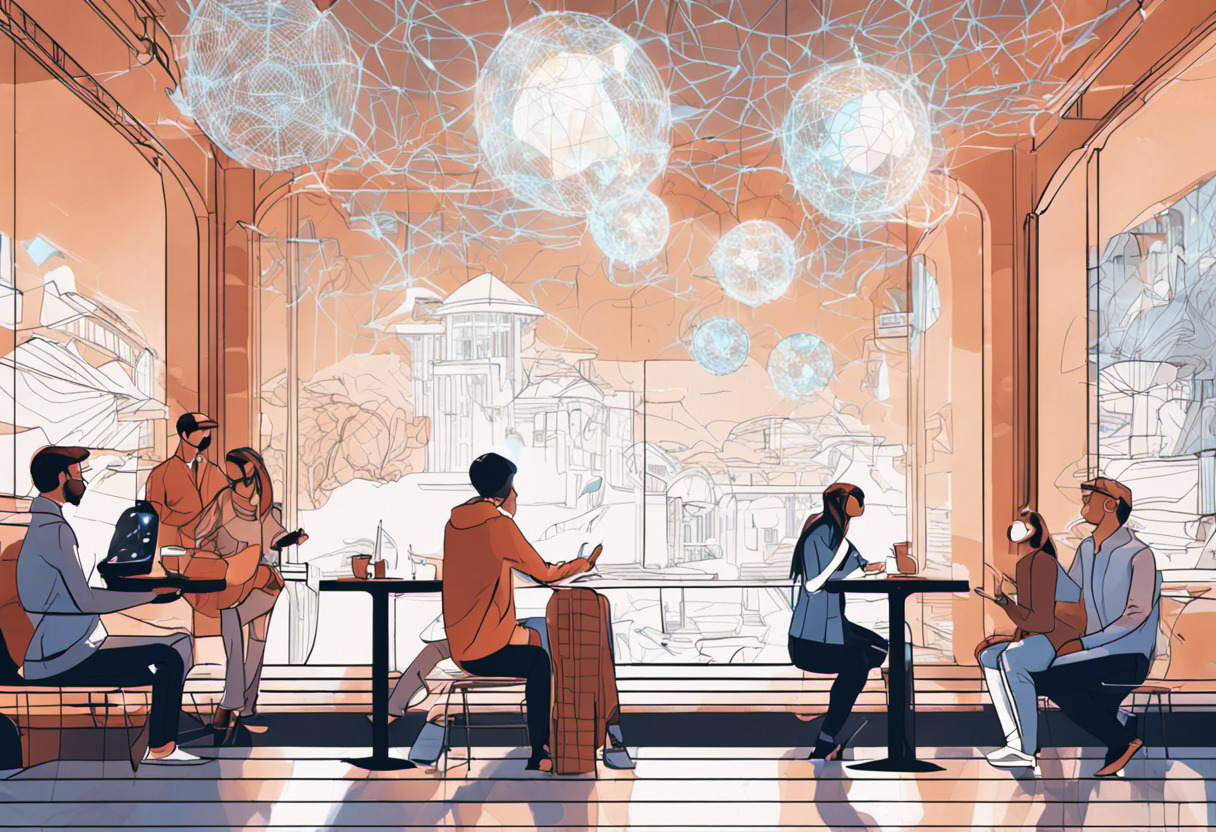
Business Opportunities through Web AR’s Ease of Access
Businesses can tap into the simplicity and compatibility of Web AR to increase their market reach. The technology works seamlessly on various platforms, ranging from desktop systems to smartphones, promoting higher functionality and user engagement.
- Wider Audience Reach: Since users are not required to download an app or procure specialized gadgets, they can easily engage with Web AR-driven content, which can lead to a significant increase in the overall user base for a business.
- High Compatibility: The compatibility of Web AR across different platforms, including most internet browsers and operating systems, makes it a highly flexible solution for businesses.
Comparison: Web AR vs Traditional AR Apps
While traditional AR apps can deliver immersive experiences, their dependence on specific devices or apps imposes restrictions on their reach. On the other hand, Web AR provides browser-based content, making it more accessible and user-friendly.
| Feature | Web AR | Traditional AR Apps |
|---|---|---|
| Access | No special app downloads or hardware requirements. | Requires downloading AR apps or purchasing specific devices. |
| Compatibility | High compatibility across different platforms and devices. | Dependent on device or app specifications. |
| Audience reach | Possibly a wider reach because of the ease of access. | Restricted due to app download and device requirements. |
Indeed, the ease of access and straightforward user experience offered by Web AR are its significant edge over traditional AR apps. This article on how web-based AR can increase user engagement and lead to significant business growth further amplifies the points discussed here, offering robust insights into the subject.
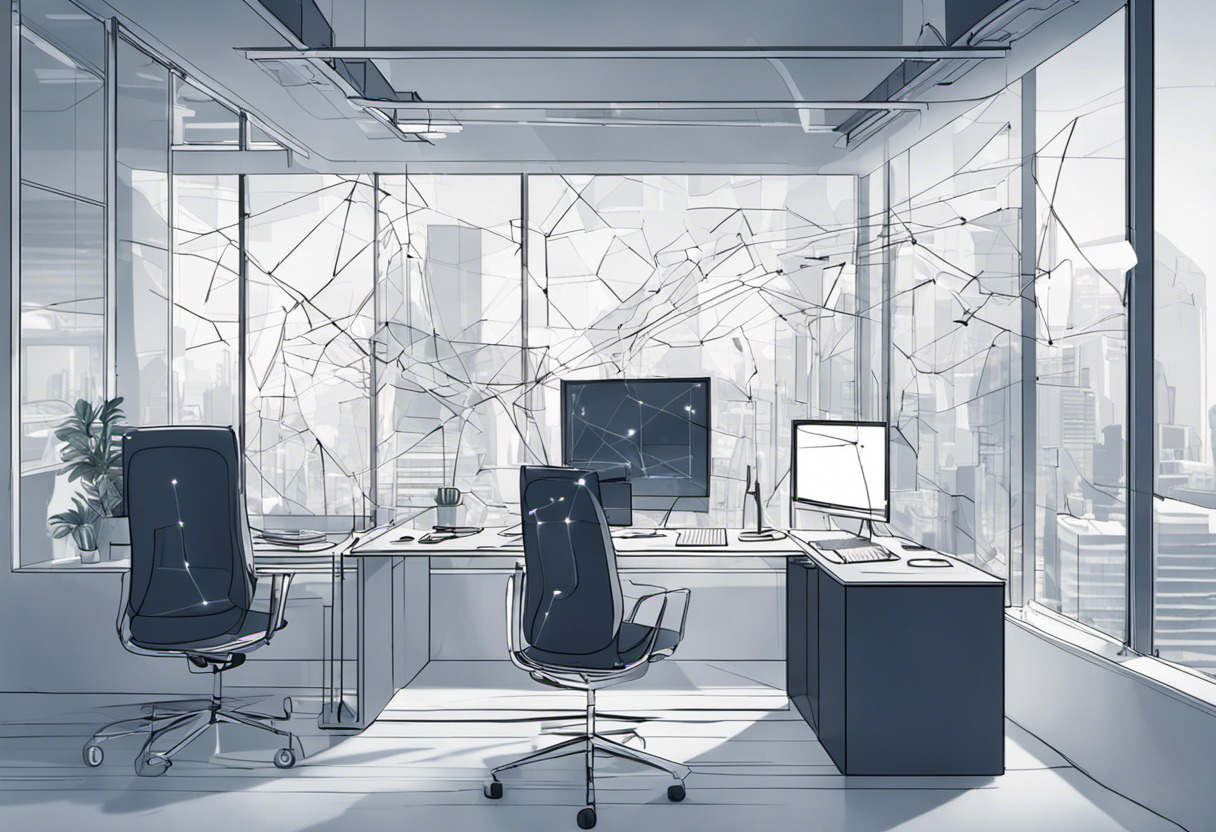
Transformation of Manufacturing Sector
While several sectors are steadily embracing Web AR, the manufacturing industry reaps some of the most significant benefits. Let’s delve into how Web AR is disrupting conventional manufacturing processes to yield more efficient and streamlined results.
Streamlining Complex Assemblies
Manufacturing intricate machinery traditionally can be a time-consuming and error-prone process. However, the integration of Web AR technologies is altering this landscape.

Web AR demonstrates 3D models of complex machinery overlaying the actual parts, allowing workers to comprehend the assembly instructions better, thus lessening the chances of mistakes. By reducing errors, companies can significantly decrease downtime and wasted resources, making the overall manufacturing process far more efficient. Web AR can aid in constructing complex machinery more efficiently, a clear win for any manufacturing-focused enterprise.
Real-time Monitoring
Another groundbreaking application of Web AR in the manufacturing industry is real-time monitoring. By applying Web-based AR solutions, managers and supervisors can visualize production data in real-time overlaid on the physical environment.
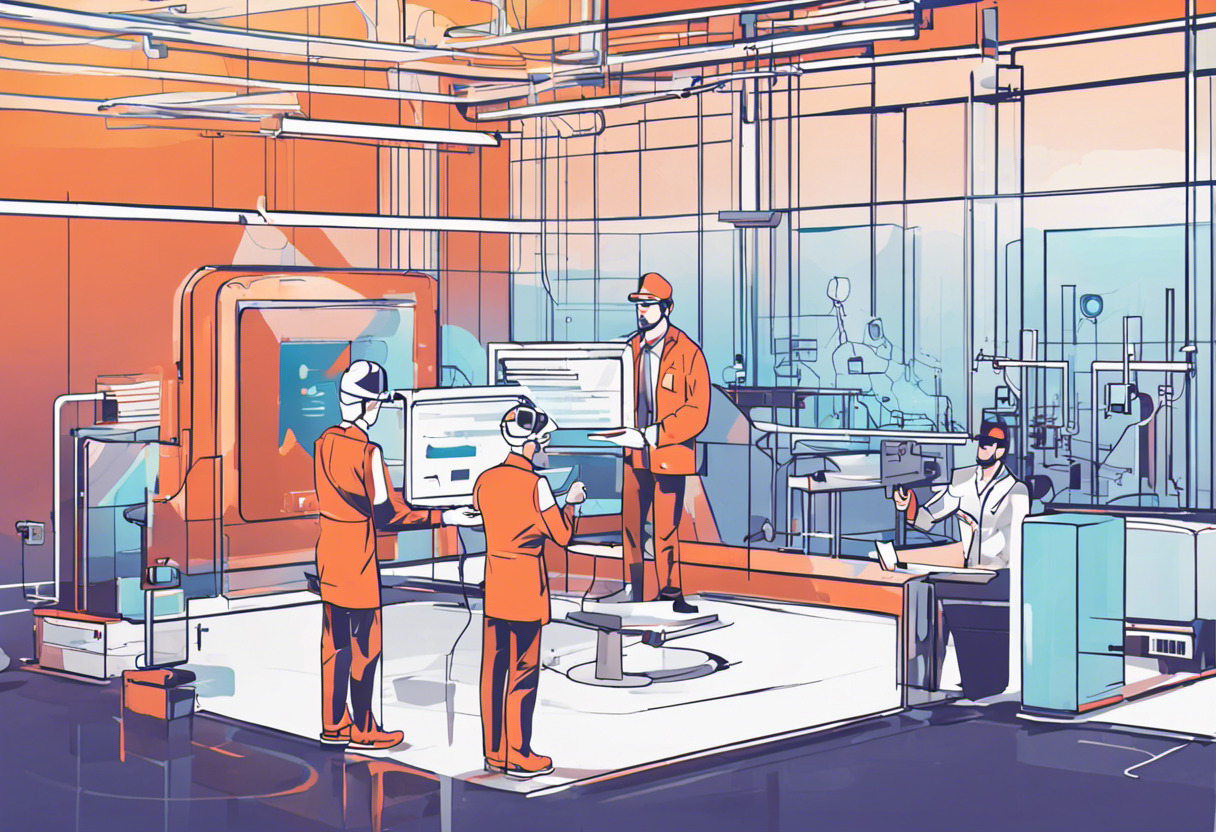
This can facilitate immediate decision making and quick problem-solving, enhancing the efficiency of operations. It allows the manufacturing process to continue unhindered, which directly impacts productivity and can significantly improve the bottom line.
- Streamlines assembly of complex machinery
- Enables real-time monitoring of work
- Improves operational efficiency
- Boosts overall productivity
Return on Investment with Web AR Technologies
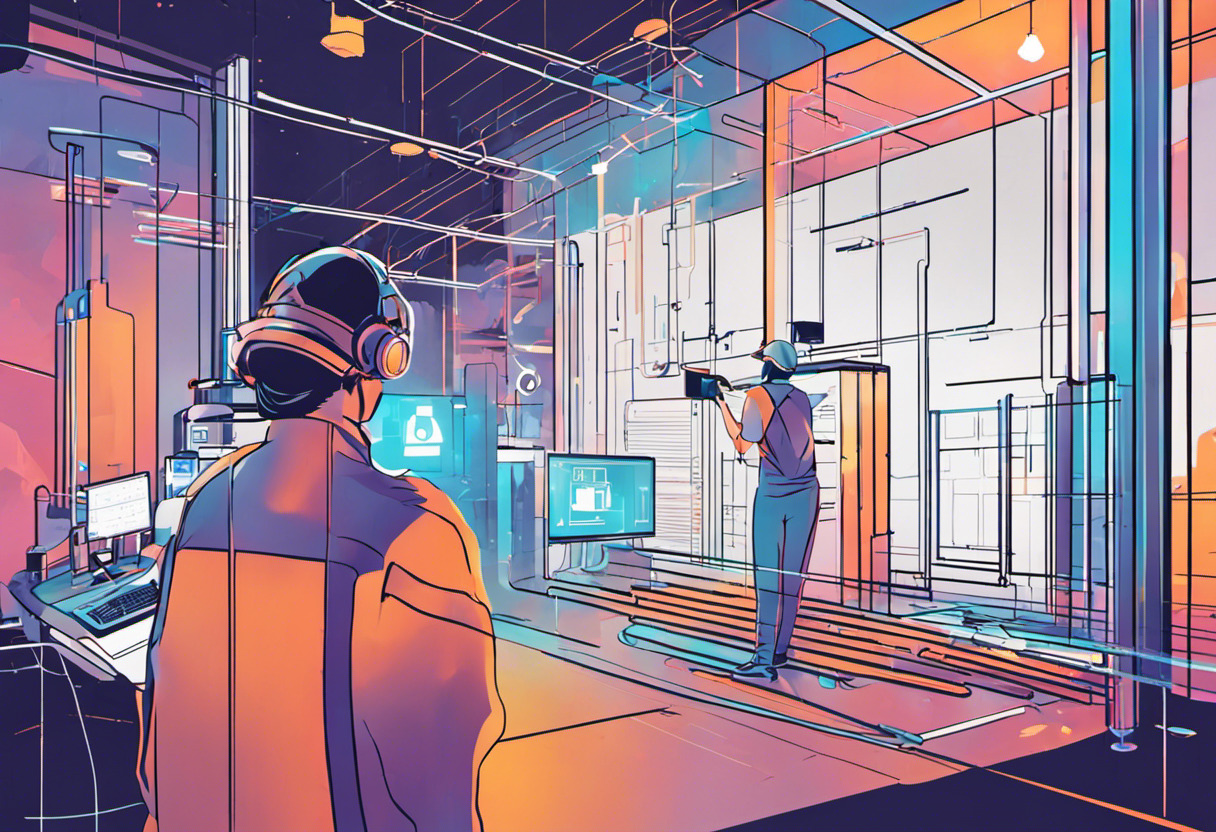
Implementing new technologies always comes with some degree of investment upfront. It’s crucial to consider the potential return on investment when considering the adoption of Web AR in manufacturing.
Data from sector leaders and early adopters suggest that the introduction of augmented reality in the manufacturing process can yield myriad benefits that outweigh the initial costs. These include an increase in productivity due to reduced errors and rework, more efficient use of resources, and enhanced quality control, all of which contribute to significant cost savings over time.
In effect, the ROI from the investment in Web AR technologies can be considerable and quick, leading to long-term benefits for manufacturers who are looking to optimize their processes, reduce costs, and remain competitive in an increasingly tech-driven industry.
| Traditional Manufacturing | Manufacturing with Web AR | |
|---|---|---|
| Error Margin | Higher | Lower |
| Efficiency | Lower | Higher |
| Productivity | Lower | Higher |
With Web AR in its toolset, the manufacturing sector can march confidently into a more efficient, productive, and profitable future.
Efficient Resource Utilization
Businesses, now more than ever, need to find agile, effective, and cost-efficient ways to deploy technologies that enhance their offerings. This is where Web AR stands out, essentially allowing businesses to bypass traditional app development and save substantial costs.

Saving Capital
App development is by no means a cheap venture. On average, a basic application can cost anywhere between $25,000 to $75,000 and a complex one can ask for a lofty $1,00,000. These costs eliminate the feasibility for many small and medium-sized businesses to invest in the AR technology realm, excluding them from potentially valuable applications of augmented reality.
Web AR, on the other hand, requires far less investment. The financial strain of first-time development, maintenance, updates, and platform-specific adaptations are drastically minimized. Rather than diverting resources into complex app development procedures and in-depth coding languages, businesses can instead focus on enhancing the user-experience, and, most importantly, their core offerings.
Affordability of Web AR versus Traditional AR Apps
Let’s delve into the relative cost analysis between creating Web AR experiences and traditional AR applications. Please note, these represent broad-range estimates and the actual cost can vary depending on the complexity, brand requirements, and geographical location of the developers.
| Cost Factors | Web AR | AR Apps |
|---|---|---|
| Development Costs | $5,000-$20,000 | $25,000-$1,00,000 |
| Update Costs (Annual) | Approximately 10% of Development Costs | Approximately 20% of Development Costs |
| Maintenance Costs (Annual) | Approximately 15% of Development Costs | Approximately 20% of Development Costs |
It’s apparent that Web AR presents a more affordable alternative. Moreover, the reduction in update and maintenance costs ensures cost-efficiency in the long run as well.
Effective Resource Allocation
Apart from monetary savings, businesses can also redistribute their resources more effectively. Lesser hardware requirements, quicker deployment, and reduced update schedules leave ample room for a more focused workforce. As a result, businesses can promote ingenuity, further their developments in their primary field, and provide better customer service.
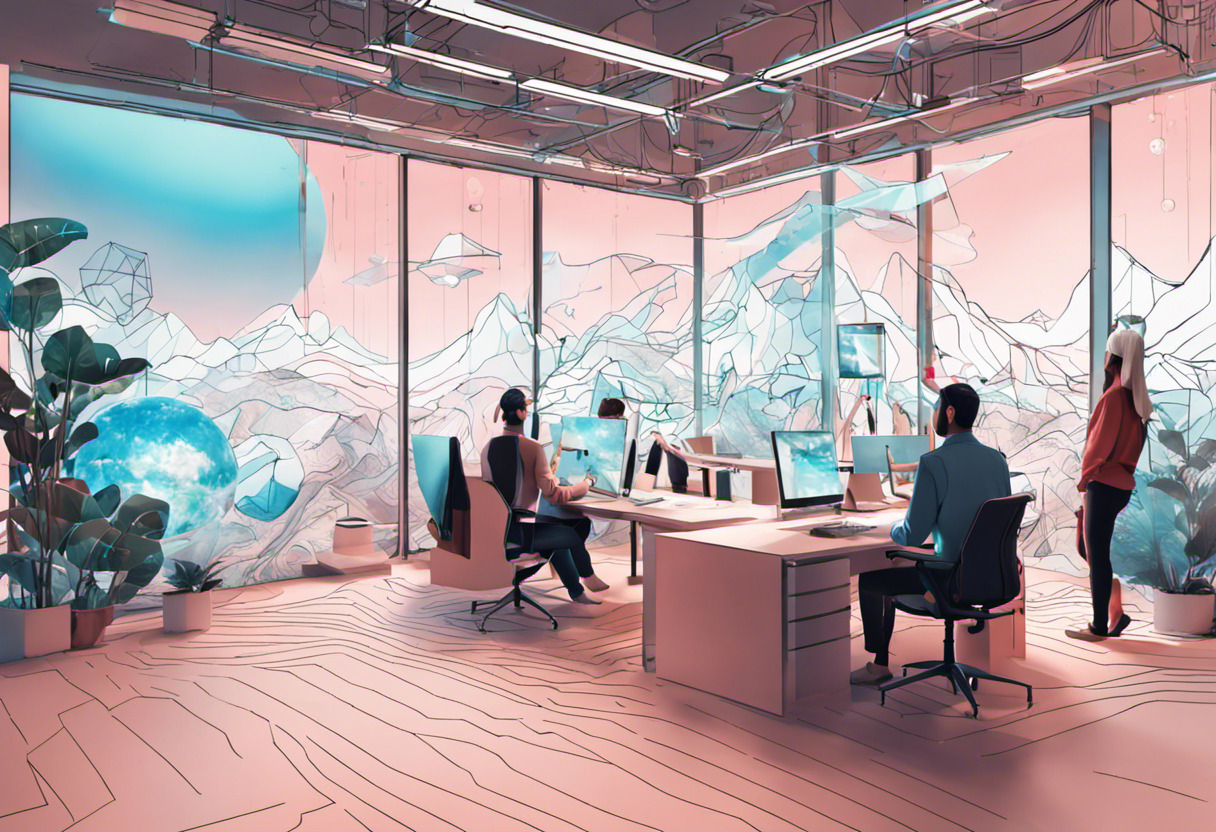
- Less Hardware Requirement: Web AR eliminates the need to develop different apps for different platforms, reducing both time and hardware investments.
- Faster Deployment: As Web AR is essentially plug-and-play, it can be implemented much quicker than an app, leading to a faster time-to-market.
- Reduced Update Schedules: Web AR experiences can be updated quickly without the need for users to re-download an entire app, saving both end-users’ and your business’s valuable time.

Web AR makes a compelling argument for businesses to explore its benefits as a cost-efficient, resource-saving initiative to elevate their online presence and user experience. It’s a win-win for both the businesses and the end-users, revolutionizing the way we interact with digital spaces and raising the bar for immersive online experiences.
Improved Engagement & Customer Connection
In the competitive business landscape where capturing and retaining consumer interest is paramount, Web AR stands as a powerful tool for fostering deeper engagement and enhancing customer connection. By engaging users in an immersive, interactive environment, Web AR not only captures their attention but also generates a lasting impression, ultimately fostering a stronger brand-client relationship.
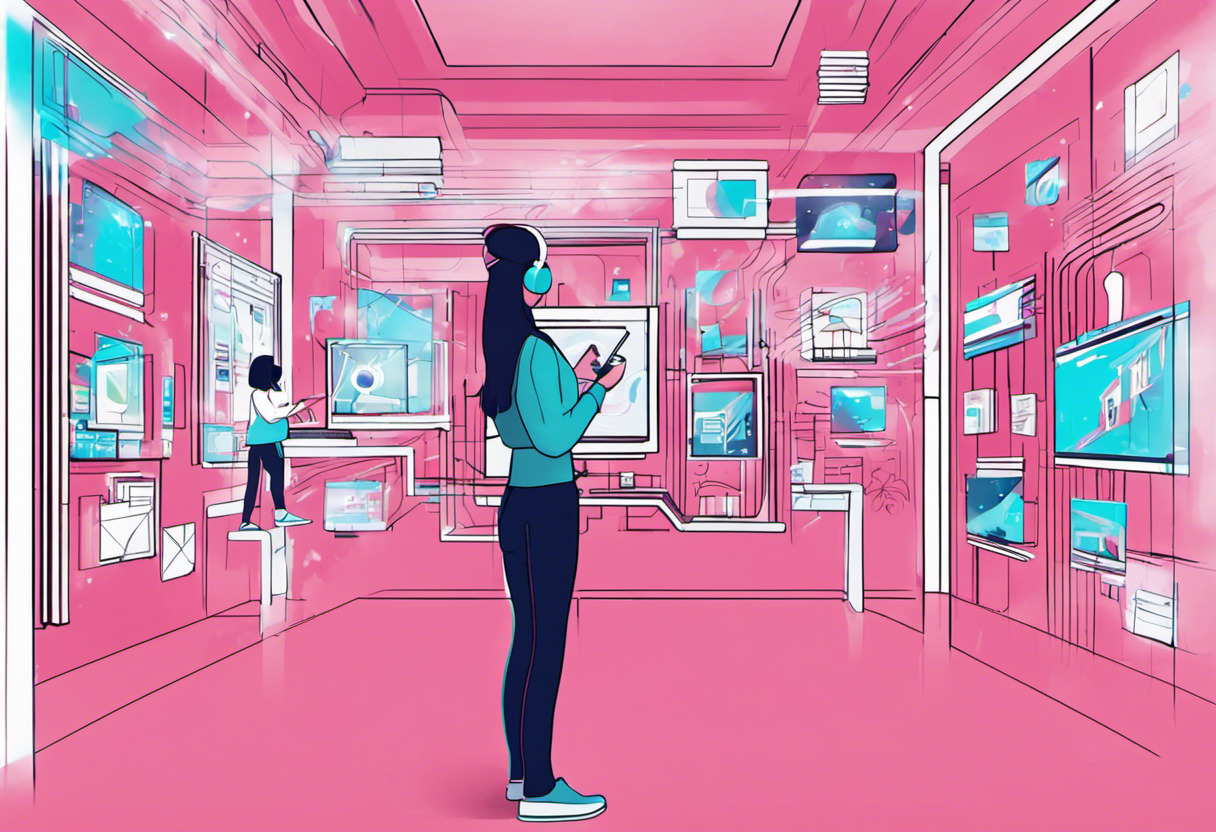
The Power of Immersive Experiences
One of the distinguishing characteristics of Web-based Augmented Reality is its ability to provide users with immersive experiences. But what does ‘immersive’ truly mean in the context of Web AR and how does it translate into increased engagement?

The immersive nature of Web AR refers to the capability of this technology to integrate digital information in the user’s real-life environment. The seamless blend of real and virtual elements ignites the curiosity of the users, compelling them to interact more with the brand’s web content. This elevates their overall experience and encourages repeat visits.
| Conventional Web Experience | Web AR Experience |
|---|---|
| Consumers passively receive information | Consumers actively interact with information |
| Limited engagement level | Higher engagement due to immersive nature |
| Connection with the brand can be superficial | Deeper, more meaningful connection with the brand |
Brands that utilize Web AR can leverage its immersive capabilities to create memorable encounters with their customers. The interactive visualization of products leaves a lasting impression in the customers’ minds, aiding in stronger brand positioning. Learn more about the influence of immersive experiences in customer engagement.
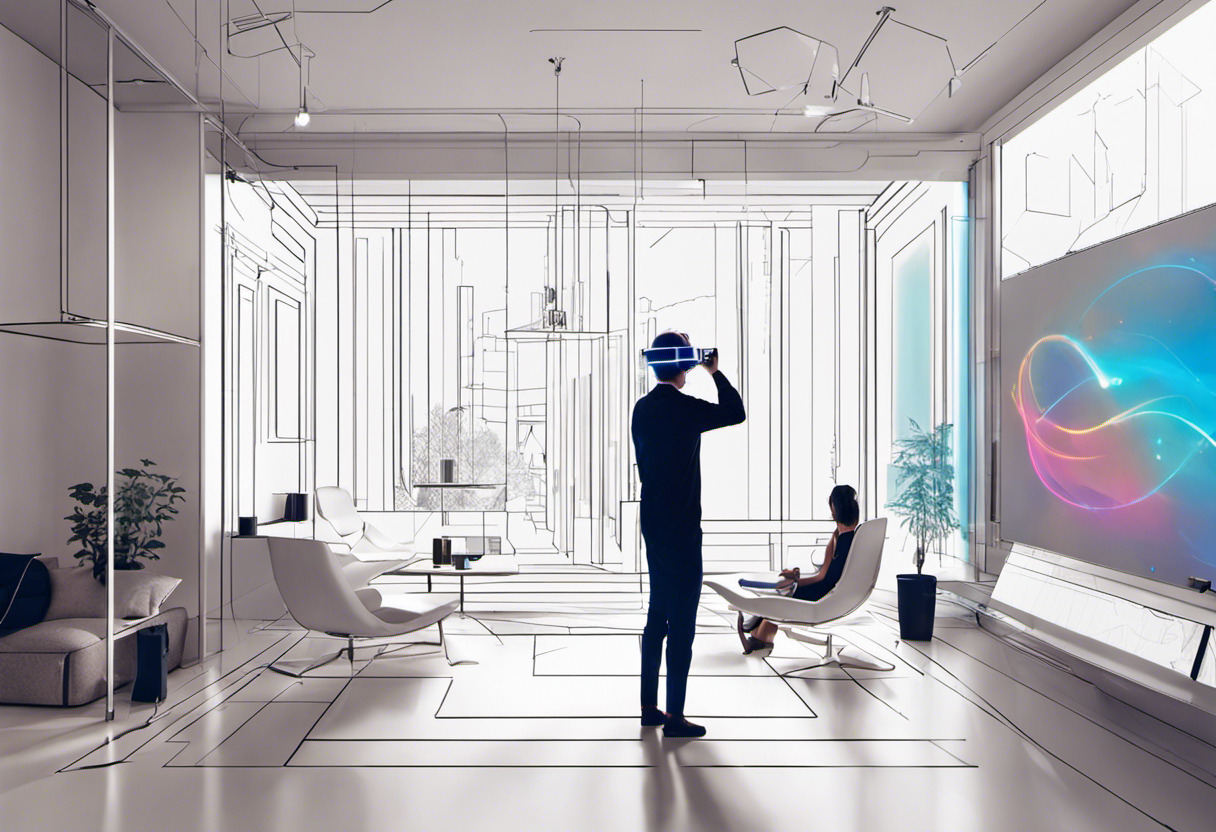
A Catalyst for Revenue Enhancement
Increased customer engagement is not merely a goal in itself, but it is a means to drive business growth and enhance revenue. By enhancing customer’s interactive experience, brands can expedite the customer decision-making process, thereby boosting their conversion rates. This also corresponds to higher customer retention and repeated sales, contributing significantly to the brand’s revenue.
Moreover, the highly personalized nature of Web AR increases customer satisfaction which in turn elicits positive customer reviews, creating a ripple effect of brand promotion. This cost-effective word-of-mouth advertising can lead to an increase in acquisition of new customers, sustaining the cycle of business growth.
- Increased engagement: Users are more likely to interact with Web AR content, leading to more time spent on your site.
- Customer Retention: Interactive and personalized experiences foster customer loyalty, leading to repeated sales.
- Word-of-mouth advertising: Satisfied customers become advocates for your brand, attracting new potential customers.
In essence, the utilization of Web AR in your business can serve as a catalyst for enhancing customer connection and engagement, subsequently driving business growth and revenue enhancement.

Steamlined Updates and Fast Product Deployments
One of the significant advantages of Web AR over traditional AR platforms is its efficient update process. Traditional AR apps often require frequent updates and maintenance from the user’s end which, if neglected, could negatively impact the user’s overall experience.
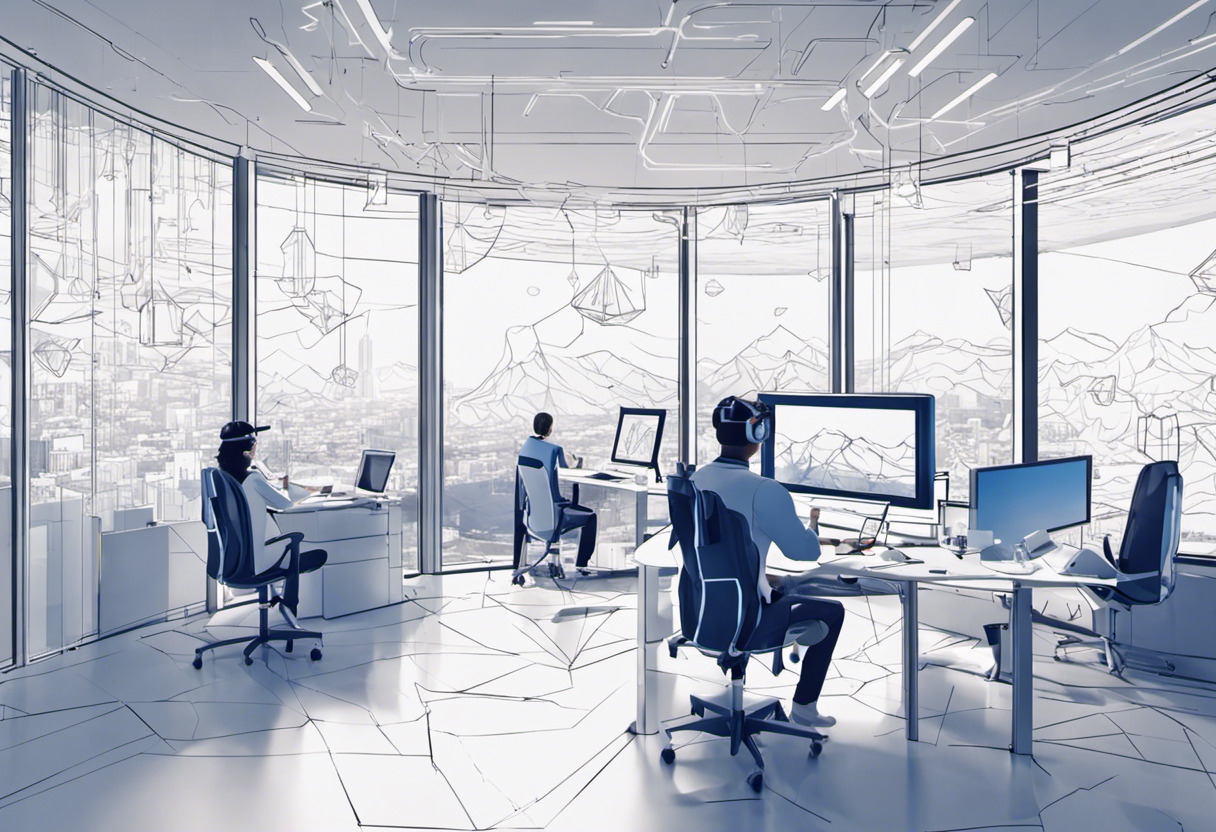
Reducing Resource Consumption
With Web AR, updates are simpler, faster, and more efficient. The technology does not force users to perform updates regularly, reducing the resources and time typically required in the maintenance and upkeep of conventional AR apps.
This facet of Web AR is remarkably advantageous for businesses, as it saves not only financial resources but also time – a fundamental component of productive business operations.
Benefits of Efficient Updates
- Cost-Effective: Eliminates the recurring cost associated with constant app updates.
- Time-Saving: Businesses can roll out improvements and new features quickly without having to wait for user updates.
- User-Friendly: Web AR eradicates the need for users to download updates frequently, offering a seamless experience.
Rapid Creation and Deployment of Experiences with Web AR
Another noticeable benefit of Web AR technology is its speed in creating and deploying augmented reality experiences. Unlike traditional AR platforms, Web AR is not constrained by the complexities and tediousness of app development.
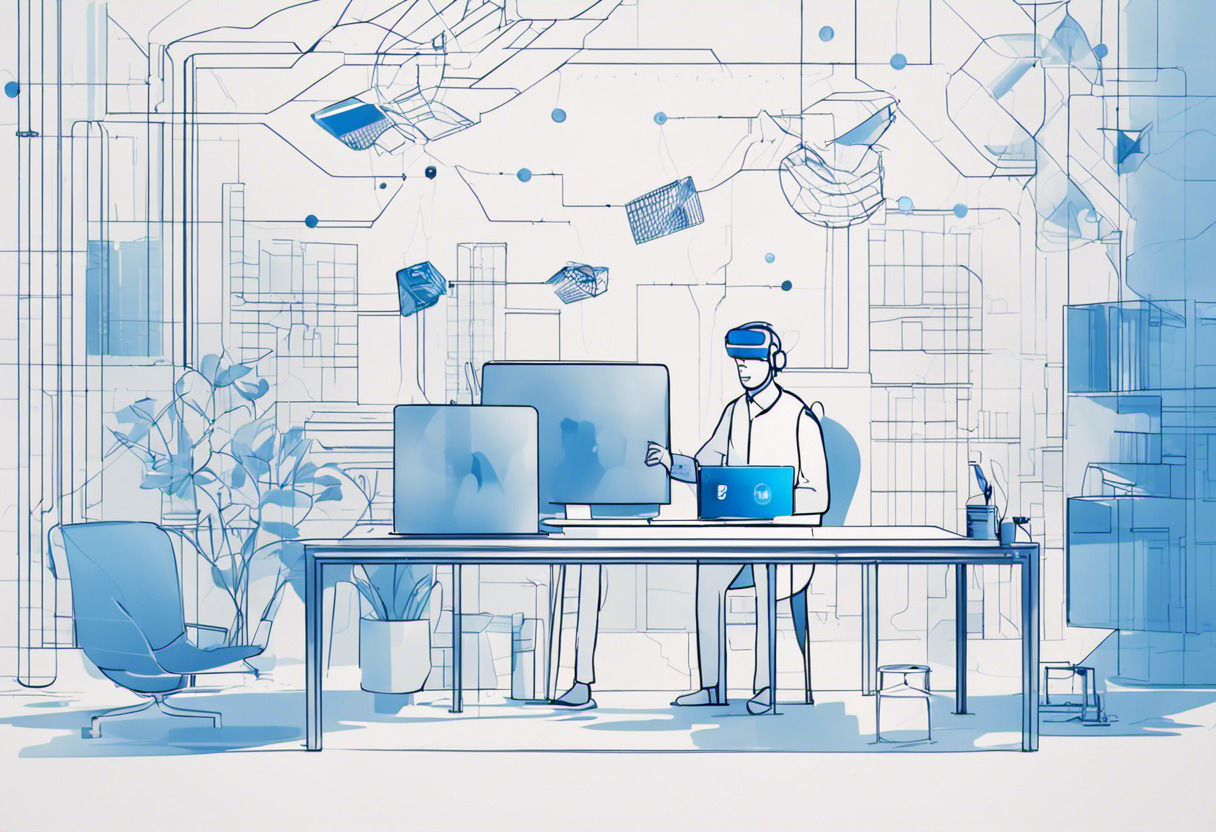
Perks of Fast Deployment
- Quick Market Release: With Web AR, businesses can create and deploy AR experiences in a fraction of the time required by traditional AR apps.
- Business Agility: Allows companies to quickly respond to market changes and customer demands, giving them a competitive edge.
- Customer Satisfaction: Providing users with fast, efficient, and seamless AR experiences boosts customer satisfaction and loyalty.
Businesses keen to explore the potentials of AR whilst minimizing resource strain and shortening time-to-market should uniquely consider Web AR as an impactful and efficient solution.
| Web AR | Traditional AR Apps | |
|---|---|---|
| Resource Consumption | Fewer Resources | More Resources |
| Update Frequency | Fewer Updates | Regular Updates |
| Speed of Deployment | Faster | Slower |
Wide Compatibility Range of Web AR Experiences
Web AR experiences, unlike traditional AR applications, exhibit broad compatibility with various web browsers, operating systems, and devices. The implications of this include a significantly wider audience reach, transforming how consumers interact with brands and experience digital content. Let us delve deeper into this aspect of Web AR technology.
Extensive compatibility across web browsers and platforms
The philosophy behind Web AR technology is simple—provide augmented reality experiences directly through a web browser. This means that the limitation of certain apps or technologies being confined to specific operating systems or browsers is eliminated. Instead, with Web AR experiences, individuals can access AR content regardless of their device or browser.
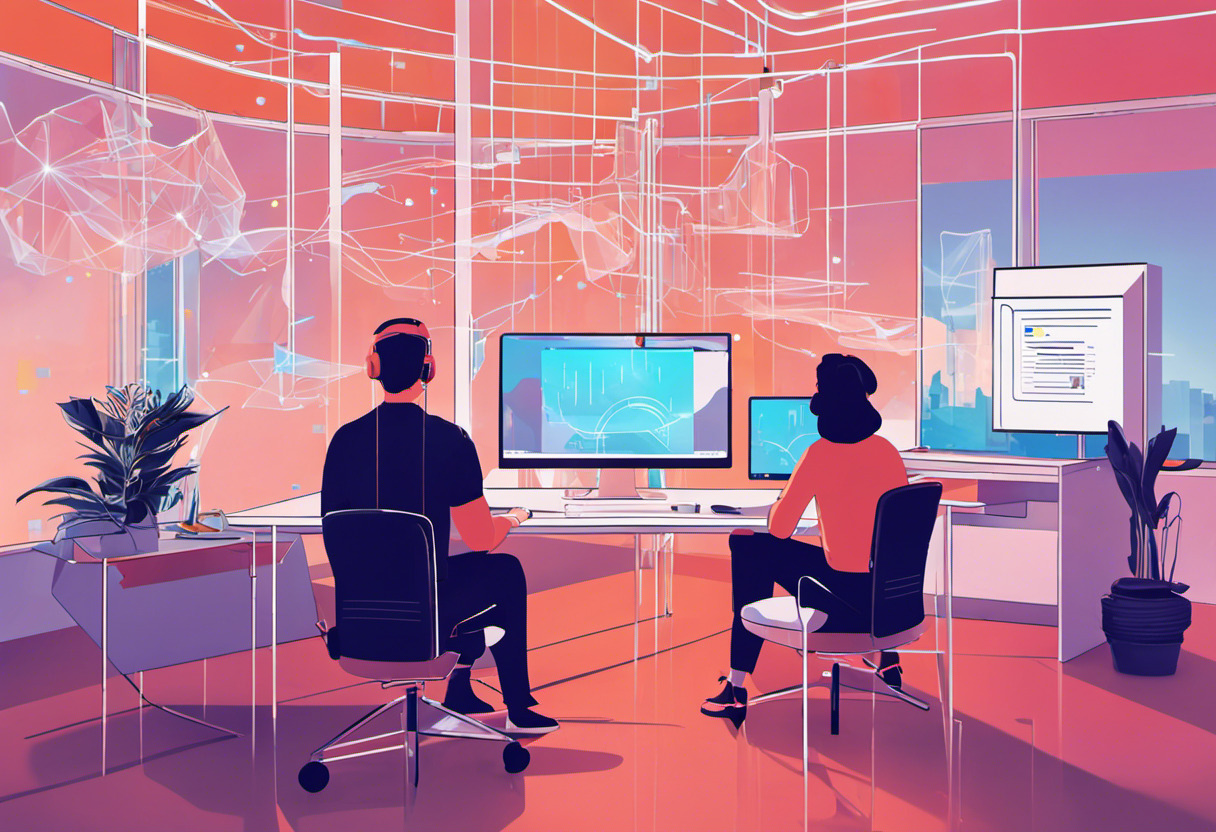
Impacting the User Base
A much wider audience base becomes accessible due to this inherent compatibility range. This opens up new possibilities for businesses seeking to leverage AR technology and maximize their reach. In addition, having fewer barriers to entry for users improves the overall user experience and engagement levels.
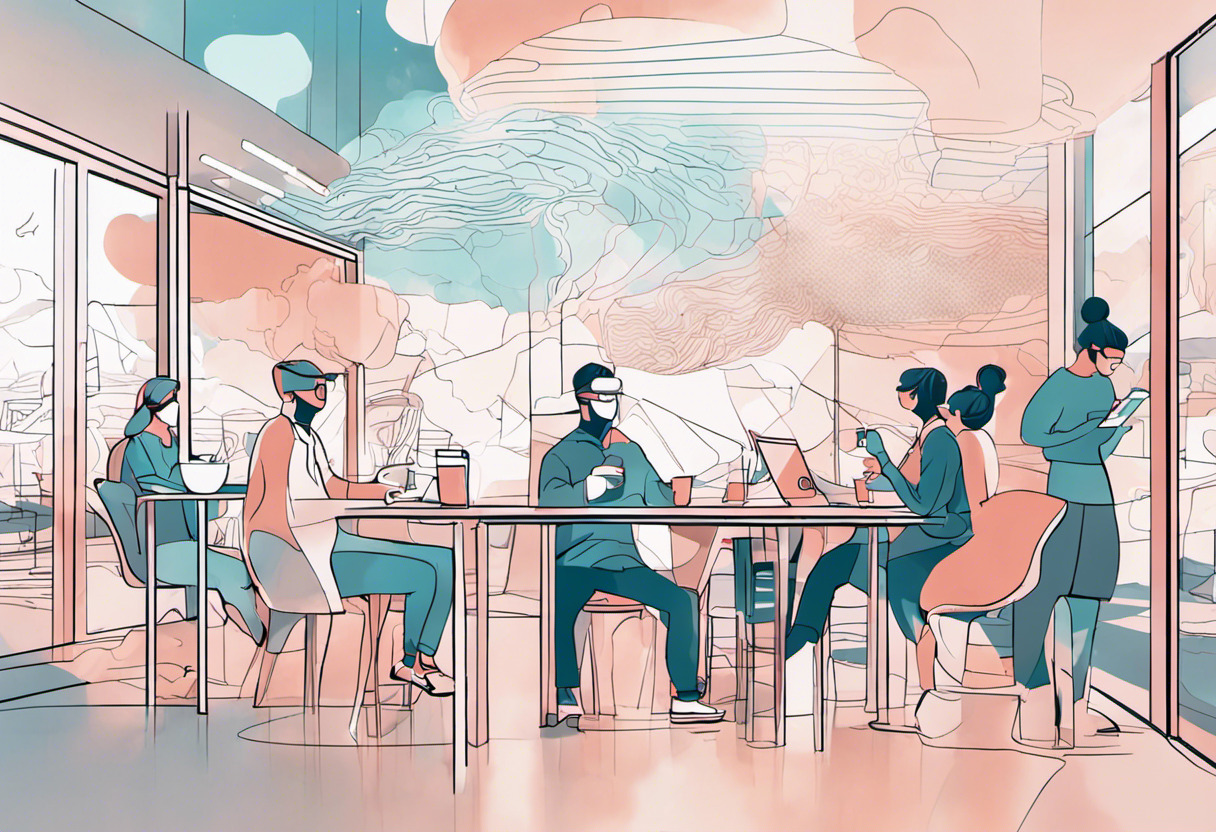
Key Points on Web AR Compatibility
- Eliminates the need for specific AR-enabled devices or apps.
- Makes AR experiences accessible on most modern web browsers.
- Enhances user engagement due to lowered entry barriers.
- Facilitates wider audience reach due to extended compatibility.
Fostering Sharability and Potential Virality
Another significant advantage of Web AR’s wide compatibility is the ease of sharing augmented reality experiences. This characteristic can lead to a higher probability of the experience being shared and potentially going viral amongst users. The power of social media and digital sharing can greatly amplify the impact of a well-designed Web AR experience.

Table showing comparison between traditional AR apps and Web AR technology:
| Parameters | Traditional AR Apps | Web AR |
|---|---|---|
| Compatibility | Limited to specific devices and platforms. | Compatible with most modern web browsers and devices. |
| Sharing AR Experiences | Generally depends on app sharing and similar installations. | Direct link sharing, enabling more natural and spontaneous sharing. |
| Potential for Virality | Limited due to app installation needs. | Increased due to fewer barriers to access and share. |
Still wondering about the real-world applications of Web AR and its wide compatibility? Check out our in-depth guide on how various industries are leveraging Web AR for business growth.
Exploring Healthcare Applications of Web AR
In the ever-evolving world of technology, new prospective arenas emerge, brimming with immense potential. One such domain is the healthcare sector, where Web AR holds unprecedented possibilities to revolutionise medical training and diagnostics.
Web AR in Medical Training
Modern medical education rests on the pillar of interactive learning, and there is no more powerful tool than augmented reality to deliver this. Using Web AR, aspiring medical professionals can master the intricate anatomy of the human body without relying solely on textbooks.
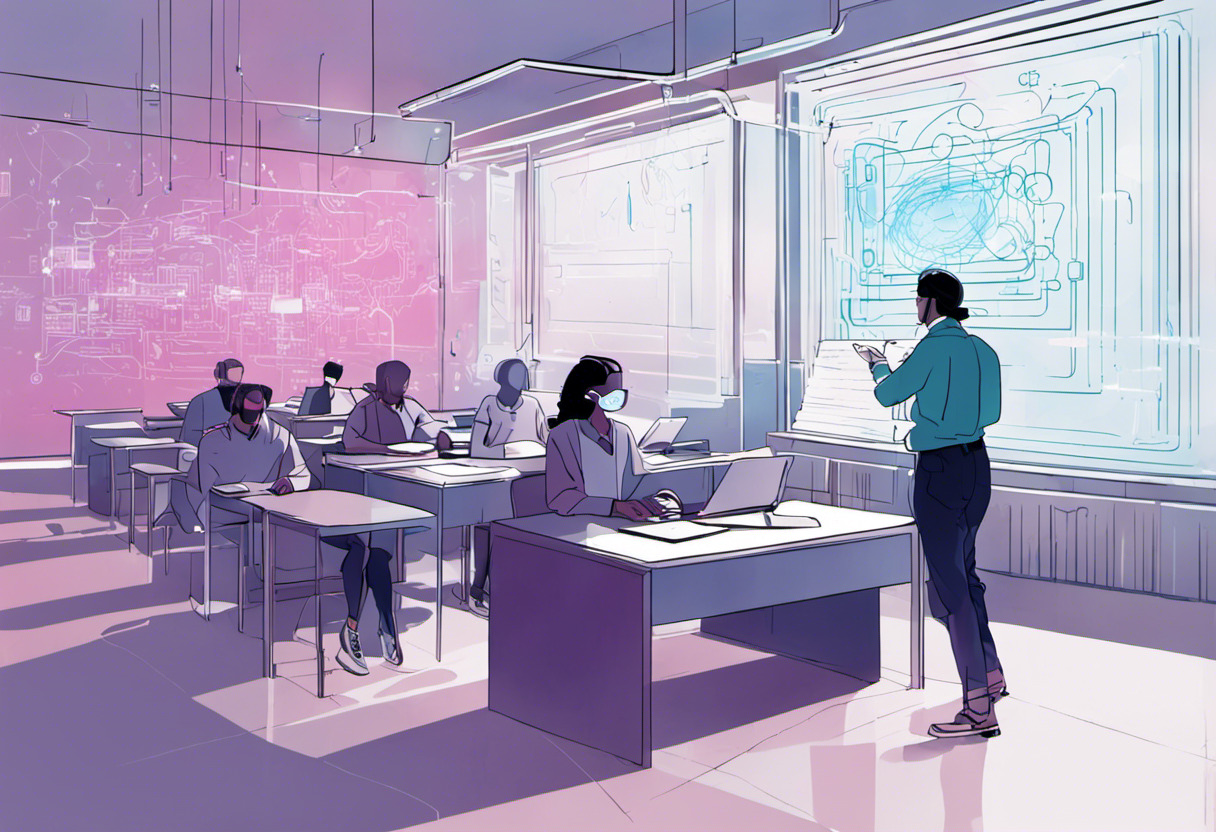
Administering medical procedures could be practiced in a risk-free, augmented environment, which might mimic unpredictable scenarios. This could offer students invaluable insight and experience they might not be able to gain in typical clinical settings.
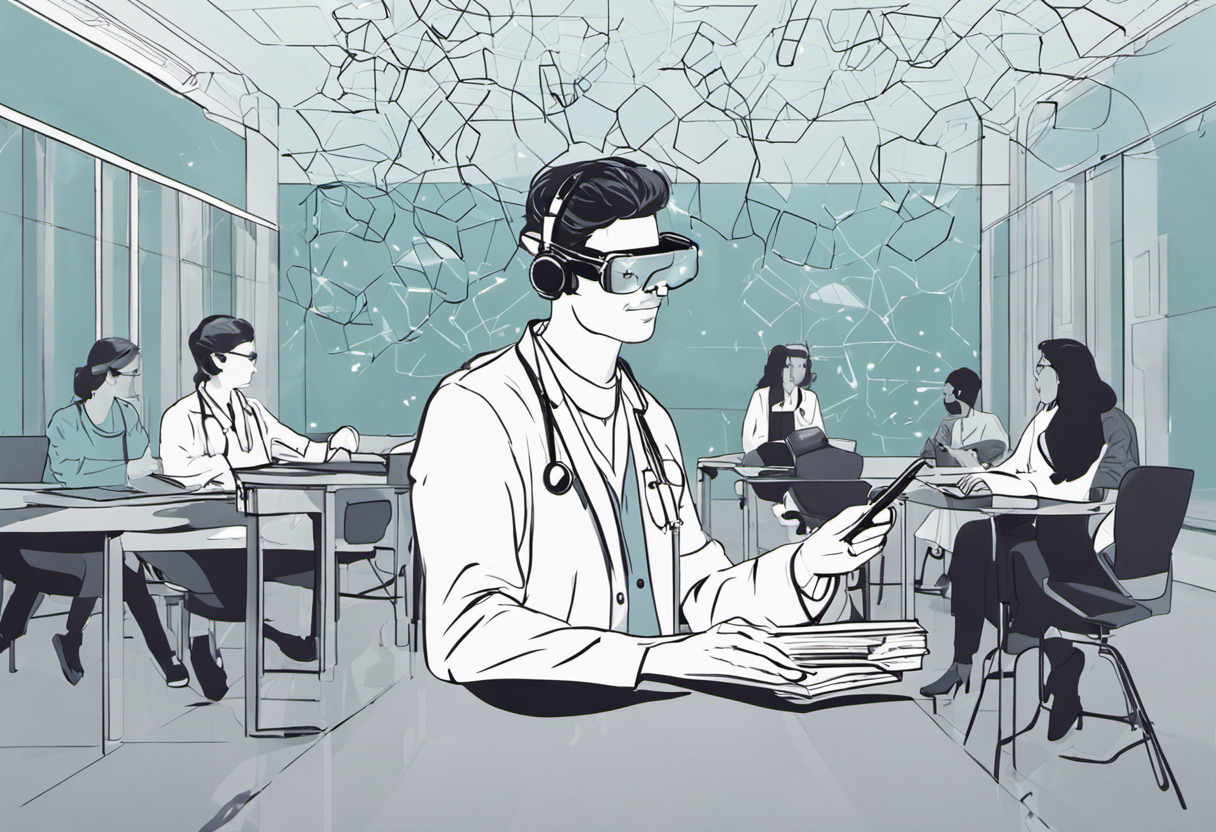
Potential Benefits of Web AR in Medical Education
| Aspect | Traditional Method | With Web AR |
|---|---|---|
| Immersiveness | Lower owing to dependence on static learning materials. | Greater as Web AR provides a 3D, interactive environment. |
| Risk factor | Higher as mistakes can have real-world consequences. | Lower as errors hold no real-world consequence in a virtual setting. |
| Accessibility | Restricted to physical availability of resources and location. | Accessible anywhere with internet access and a personal device. |
Web AR for Enhanced Diagnostics
Web AR stands as a monumental leap in the field of diagnostics, paving the path for more accurate and efficient outcomes. Physicians can superimpose digital data onto a patient’s real-world view, empowering them with an advanced understanding of the problem.
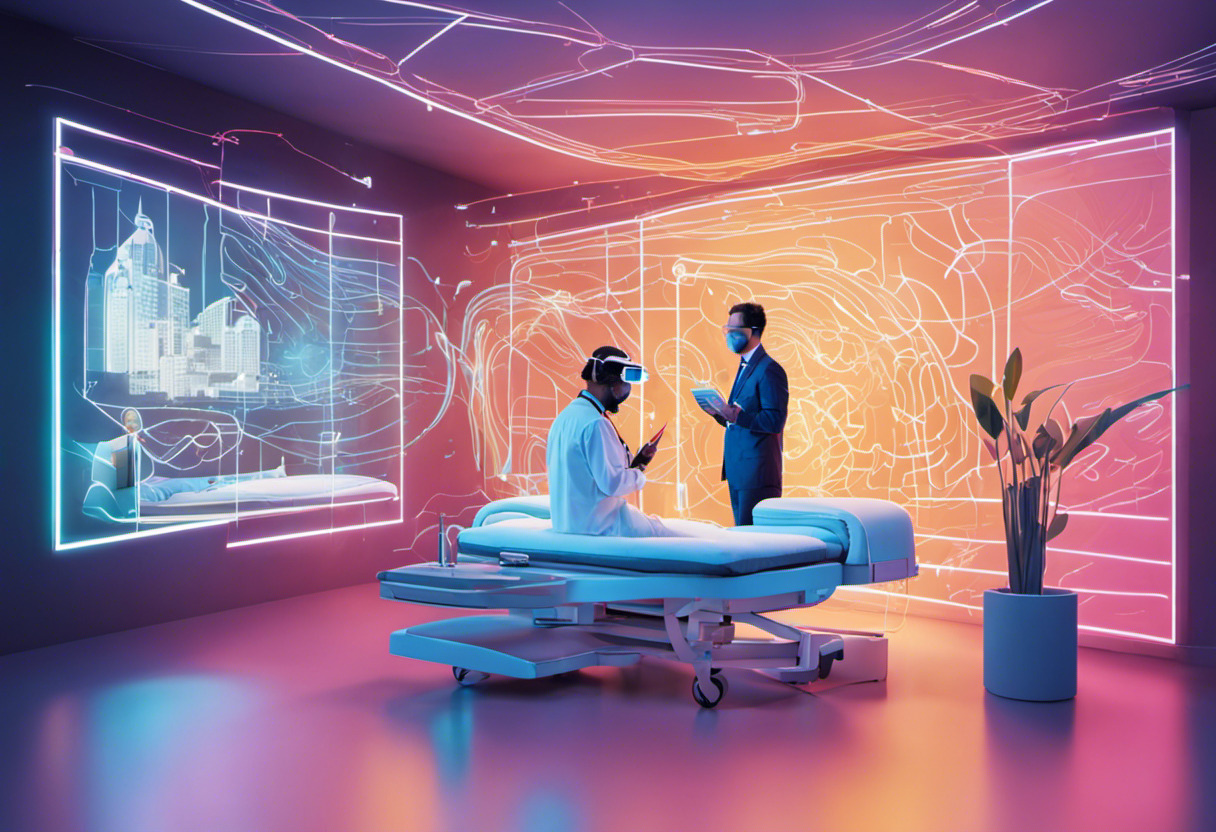
From layering CTs and MRIs over patients to analyzing disease patterns in real-time on a geographical scale, Web AR could play a significant role in helping doctors make better-informed decisions.
Learn more about innovative technologies transforming industries in this comprehensive guide.
- Greater Precision: By overlaying augmented images on the real-world, physicians can acquire a deeper understanding of a condition and deliver more precise treatments.
- Improved Communication: Using Web AR, physicians can visually communicate complex conditions to their patients, making the consultation more effective.
- Streamlined Workflow: By integrating data within a patient’s AR view, medical practitioners can streamline their workflow, mitigating chances of errors or overlooked anomalies.
For healthcare firms, businesses, and professionals, Web AR could very well be the next step to a more productive and efficient future, linking the real world with virtual assistance in a manner that truly does justice to the term ‘cutting-edge’.

Redefining the Retail Experience
The retail industry is witnessing a new revolution with the introduction of Web AR – a revolution characterized by increased customer satisfaction, reduced product returns, and augmented product visualization. From virtual fitting rooms to an immersive online shopping experience, Web AR presents limitless possibilities for retailers.
Enhanced User Experience through Virtual Fitting Rooms
Online shopping has its share of apprehensions about fit and appearance, especially in the realm of fashion retail. However, Web AR virtually eliminates these fears.
Virtual fitting rooms, powered by Web AR, allow customers to try on clothes, accessories, or even makeup from the comfort of their homes. Users can view the products on a virtual version of themselves before making a purchase. Hence, it significantly reduces the uncertainty that often accompanies online shopping and decreases the likelihood of product returns.
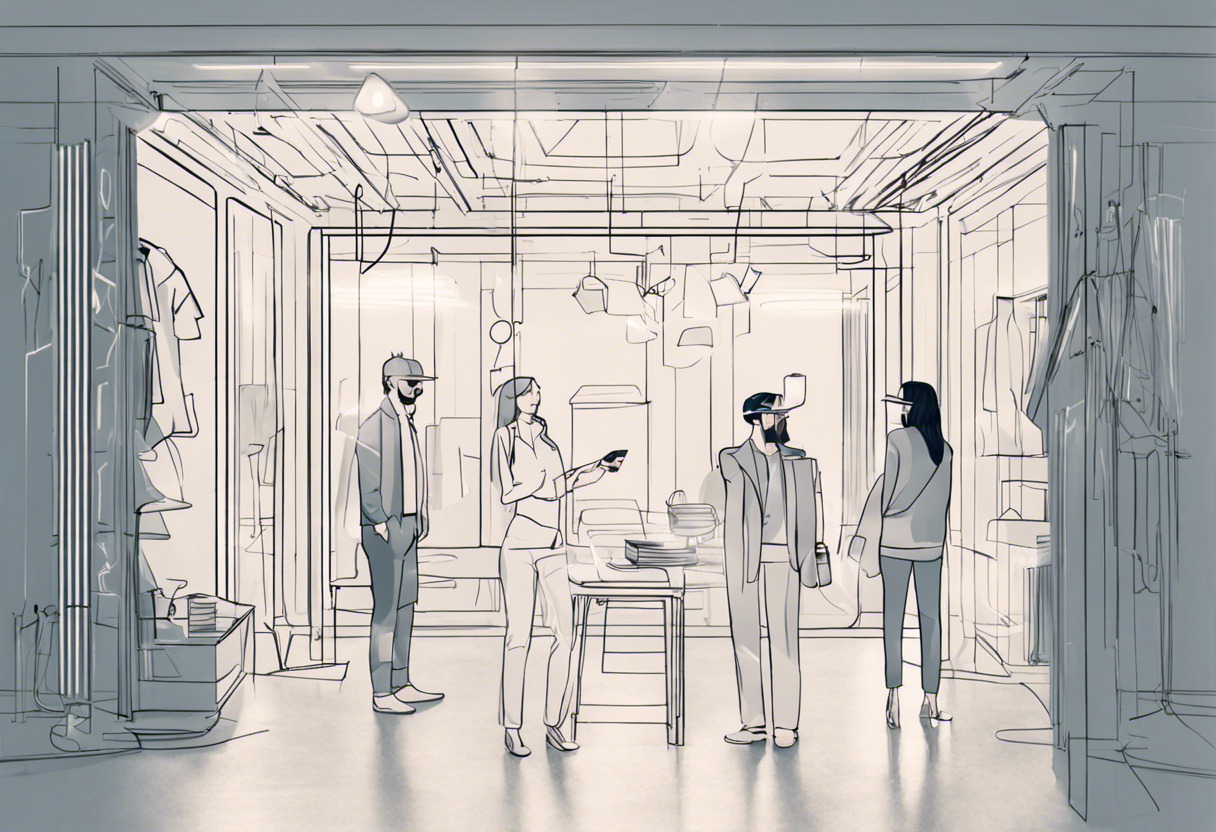
Boosting Sales through Augmented Product Visualization
Along with virtual fitting rooms, Web AR has another exciting feature up its sleeve – AugmentedProduct Visualization. This innovative technology presents products in a 3D-view, enabling customers to inspect a product from every angle just like they would in a physical store.
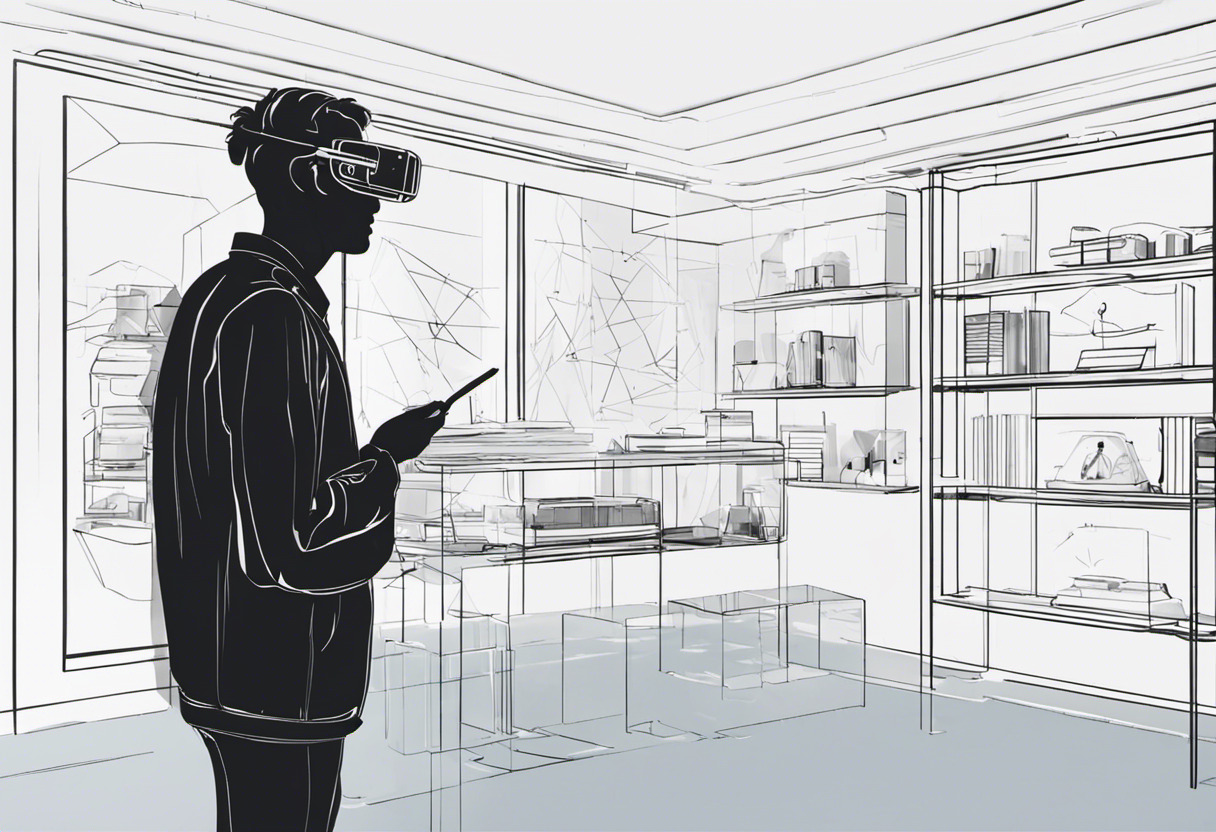
Imagine being able to evaluate a piece of furniture by placing it in your living room virtually, or studying a gadget’s design in meticulous detail. These interactive, immersive experiences not only improve customer satisfaction but also foster confidence in the product, positively influencing sales.

- Virtual fitting rooms: They bring the trial room experience to customer’s homes and help alleviate concerns about fit and appearance.
- Augmented Product Visualization: It presents a 3D view of products, allowing customers to inspect items in detail which further cements their buying decision.
| Without Web AR | With Web AR |
|---|---|
| Limited view of the product | 360-degree view with Augmented Product Visualization |
| Uncertainty about fit and look | Virtual fitting room experiences for precise fit and look |
| Higher return rates | Reduced return rates due to increased satisfaction |
Web AR truly holds the potential to revolutionize the retail industry. Its capabilities are not confined to just fashion or furniture; the scope extends to every sector of online retail. This technology gives users the power to interact, visualize, and engage with the products in a way that was previously possible only in brick and mortar stores. Discover the captivating world of Web Augmented Reality and its transformative potential in retail.
Influence on Education and Training
Immersive technologies such as Augmented Reality (AR) have the potential to reshape industries, and one of these sectors that can notably benefit is the field of education. More specifically, Web AR, being easily accessible via web browsers, can open new horizons for education and training.
Reshaping Education
Web AR can bring a key development in education; equipping it with a tool for real-life simulations for an enhanced learning experience. The conventional chalk and board model of teaching can be transformed using Web AR to create a more immersive, interactive and engaging environment for learners. This dynamic style of teaching can significantly enhance comprehension, retention, and application of knowledge.
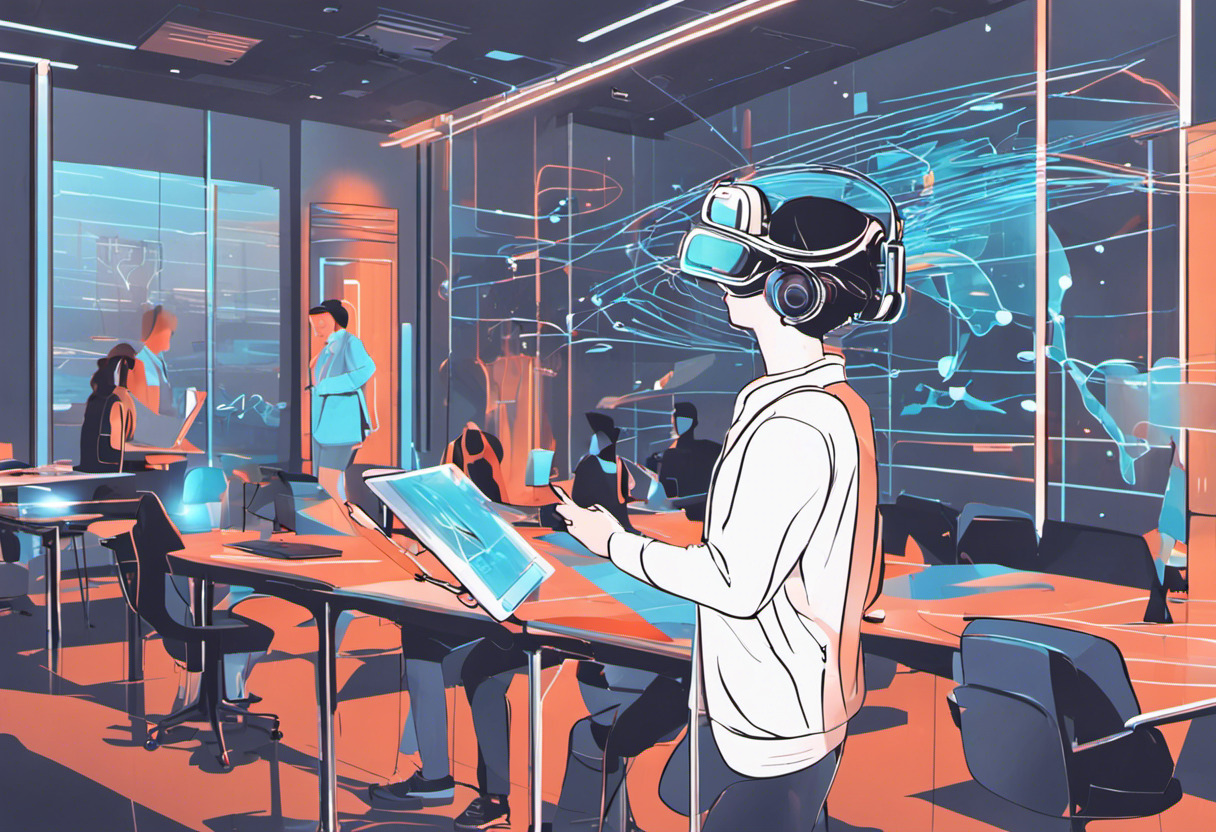
Web AR can give students a way to interact with three-dimensional models of complex diagrams and structures, improving their understanding of intricate topics.
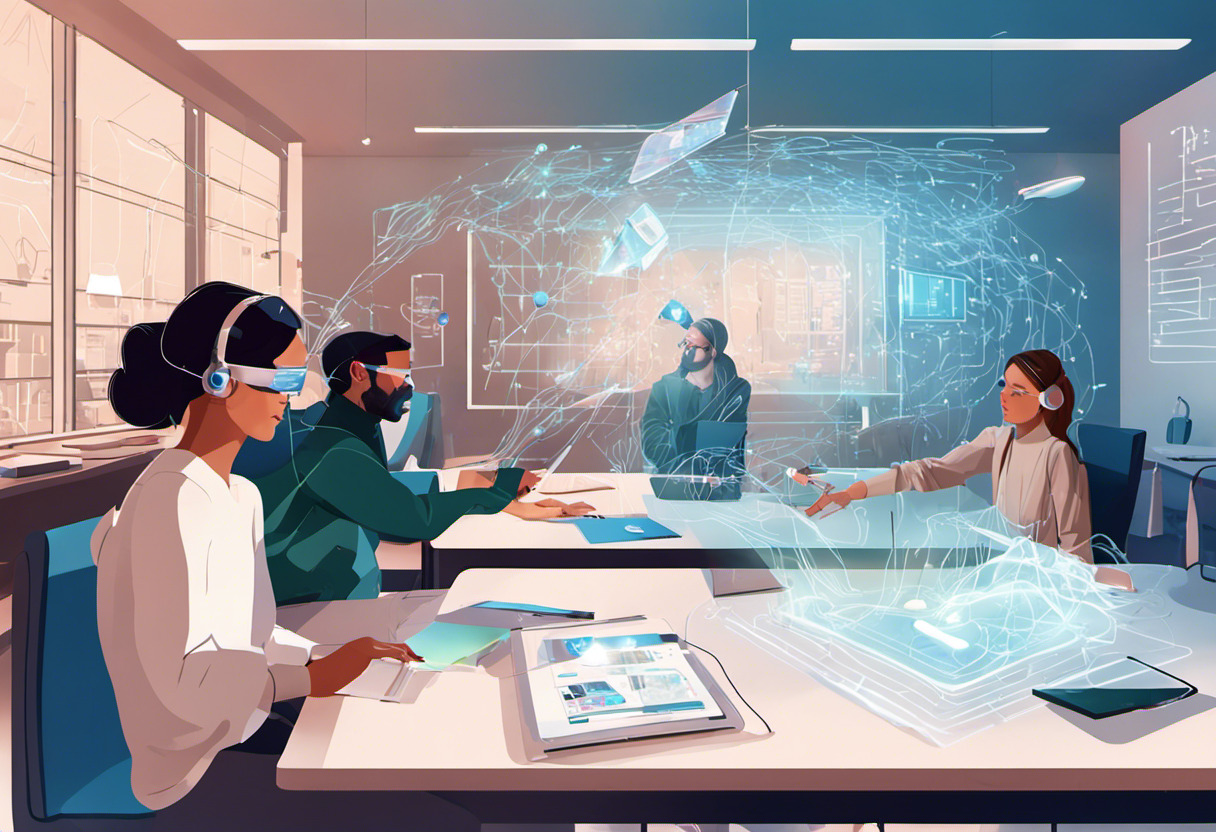
- Improved Engagement: Children are more likely to engage with interactive content than static textbooks. Web AR creates a learning by doing environment, increasing attention spans.
- Enriched Understanding: 3D models and simulations can make abstract or complex concepts tangible, aiding in improved comprehension.
- Enhanced Memory: Visual and interactive learning experiences can enhance memory retention, making concepts easy to remember.
Comparison to Traditional Teaching Methods
As we progress in a technologically evolving world, it becomes necessary to assess the advantages of Web AR over traditional teaching methods in educational settings.
| Factors | Traditional Teaching | AR Teaching |
|---|---|---|
| Engagement | Limited student engagement. | Highly interactive, stimulates curiosity and interest. |
| Understanding | Many complex concepts can be abstract and challenging to grasp. | Visual and tactile interactions simplify complex concepts. |
| Accessibility | Confined to classrooms. | Accessible anywhere with a web browser, promoting remote learning. |
For an in-depth research on how augmented reality improves learning outcomes, you can refer to this comprehensive study on AR in education and its potential benefits.
Web AR for Training Professionals
It’s not just school or university classrooms that can benefit from Web AR technology. From corporate training modules to hands-on professional skills, AR can offer real-time, practical learning opportunities. For example, an engineer can learn to assemble complex machinery or a medical student can examine a detailed 3D model of the human heart— all on their web browser.
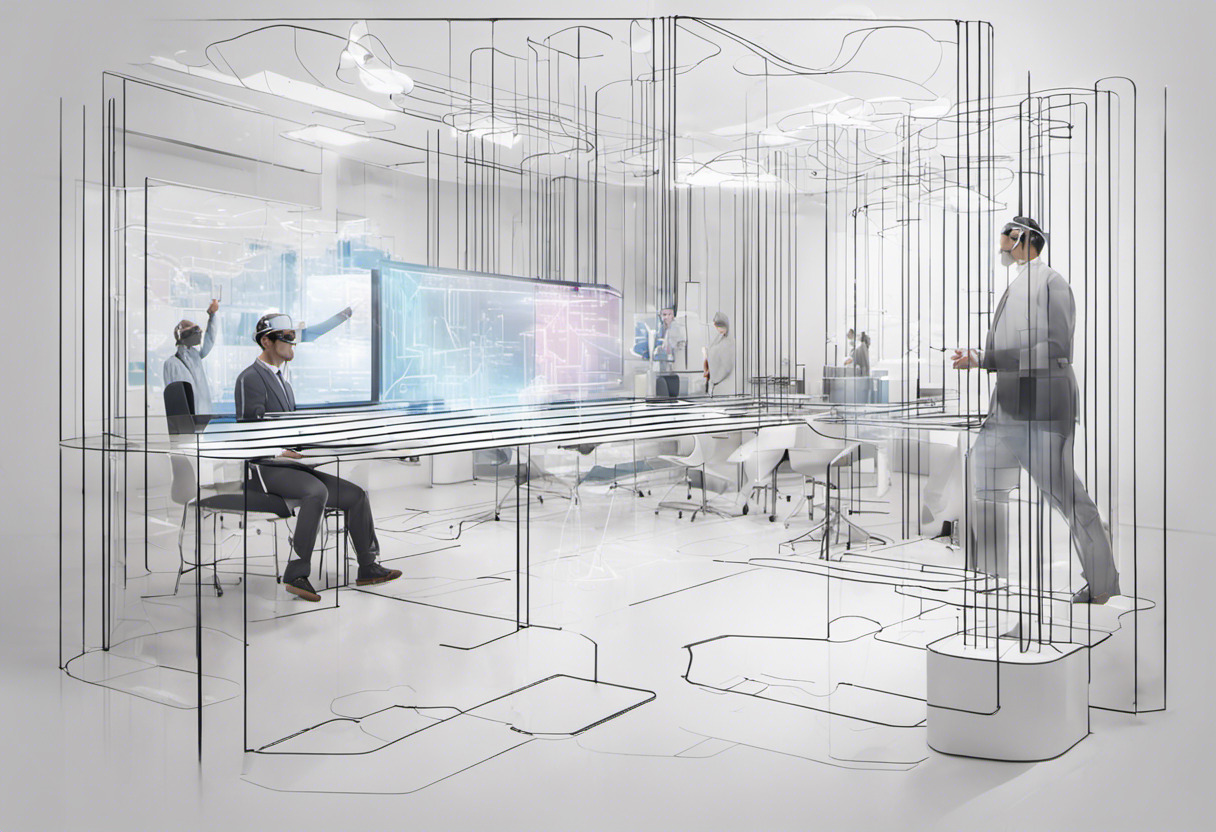
In conclusion, the potential of Web AR in revolutionizing education and training is vast. This technology offers an engaging learning environment, enriched understanding of complex concepts, accessibility, and a practical learning platform. As businesses recognize this potential, Web AR can become the future standard in education and training, gradually replacing conventional pedagogies.
Boosting Tourism Through New Mediums
With the right application of technology, tourism can become a more immersive and valuable experience for all. Consider an integration of GPS with Web AR, and the possibilities that unfold are impressive. With Web AR augmented directions, tourists have a more intuitive way to explore their surroundings, while conveying real-time information on nearby attractions and amenities becomes simpler. In the following sections, we delve deeper into how Web AR can enhance tourism.
Enhancing Exploration via GPS-integrated Web AR
The combination of GPS and Web AR can literally become a tour guide in the pocket of every tourist. By overlaying digital content onto the physical world, it makes navigation significantly easier and more engaging.
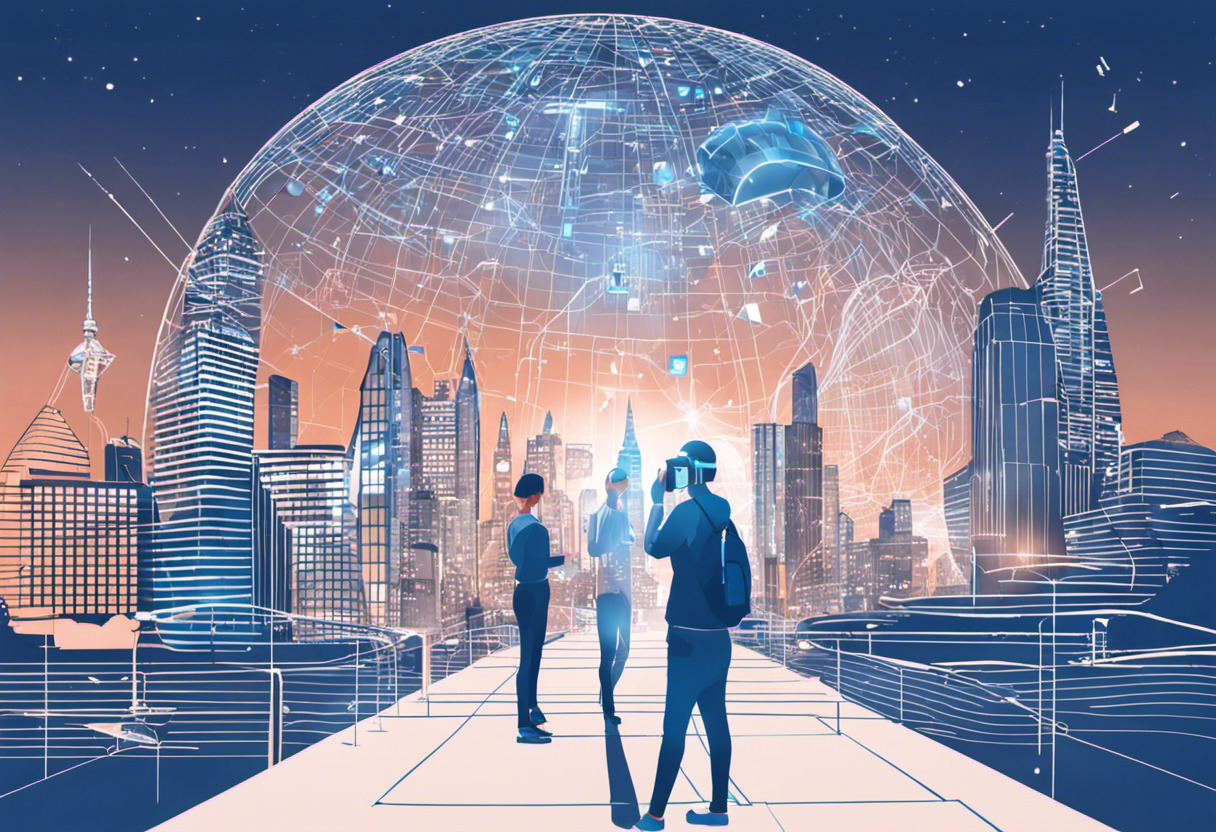
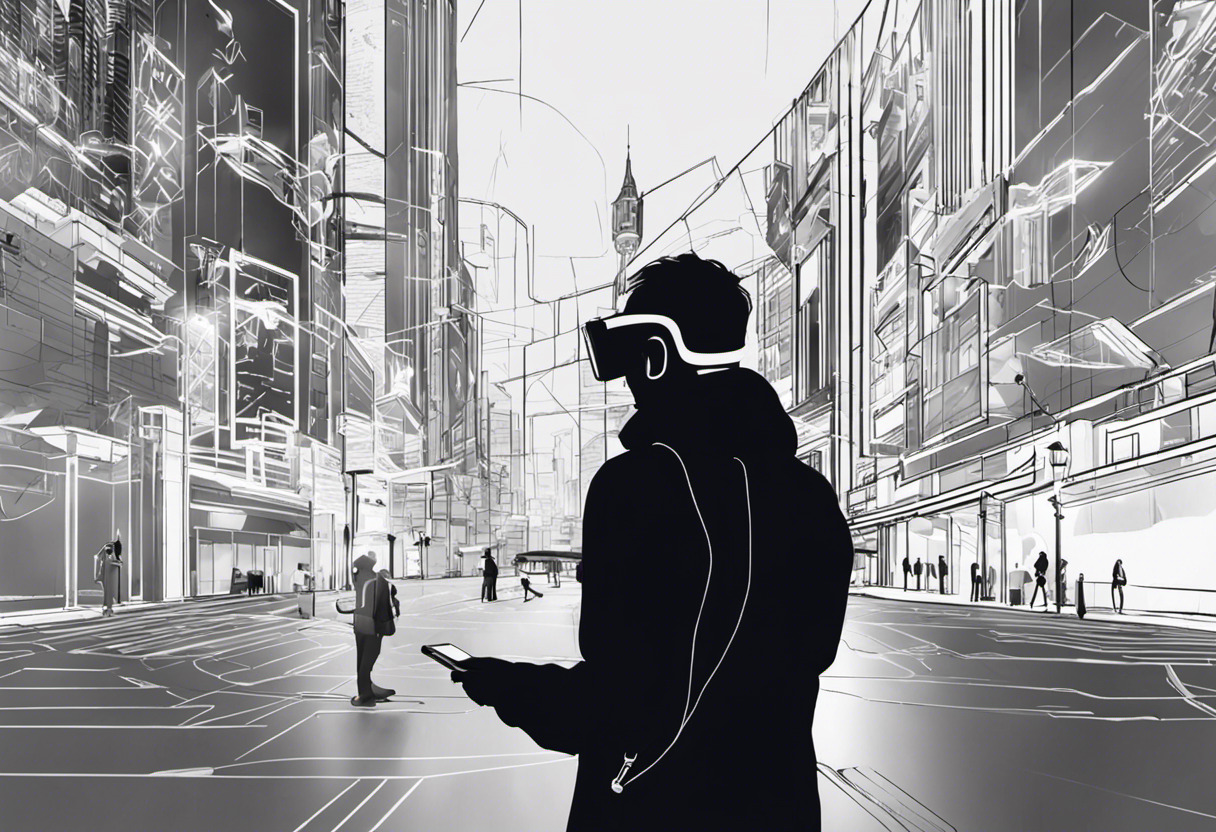
Providing real-time directions with interesting anecdotes about local landmarks or historical significance can add a whole new dimension to a tourist’s experience. Here are some functionalities that can be achieved with the integration:
- Real-time directions: The application can overlay the correct path on the user’s screen, reducing any chances of wrong turns and making navigation virtually foolproof.
- Sightseeing information: Users can point their device at a monument or tourist spot and get detailed information about it.
- Translation services: In non-English speaking countries, the AR application could provide real-time translation of signs or menus, reducing language barrier issues considerably.
Potential Benefits to the Tourism Industry
Next, let’s discuss the significant advantages this technology could bring to the tourism industry. By enhancing the overall experience of tourists, Web AR holds great potential to drive economic growth in the sector.
| Benefits | Explanation |
|---|---|
| Increased tourist engagement | By offering a more interactive exploration experience, Web AR applications can increase tourist engagement. This can lead to more visits, longer stays, and generally more expenditure. |
| Expanded accessibility | Web AR can remove language and navigational barriers, making the destination more accessible for international tourists. |
| Industry differentiation | Destinations that incorporate Web AR can differentiate themselves from the competition, attracting tech-savvy tourists who seek enhanced experiences. |
The impact Web AR can have on the tourism industry is vast, depending on the innovative use-cases developed. With its ability to overlay useful data onto immediate surroundings, it can transform the sector into a tech-driven industry.

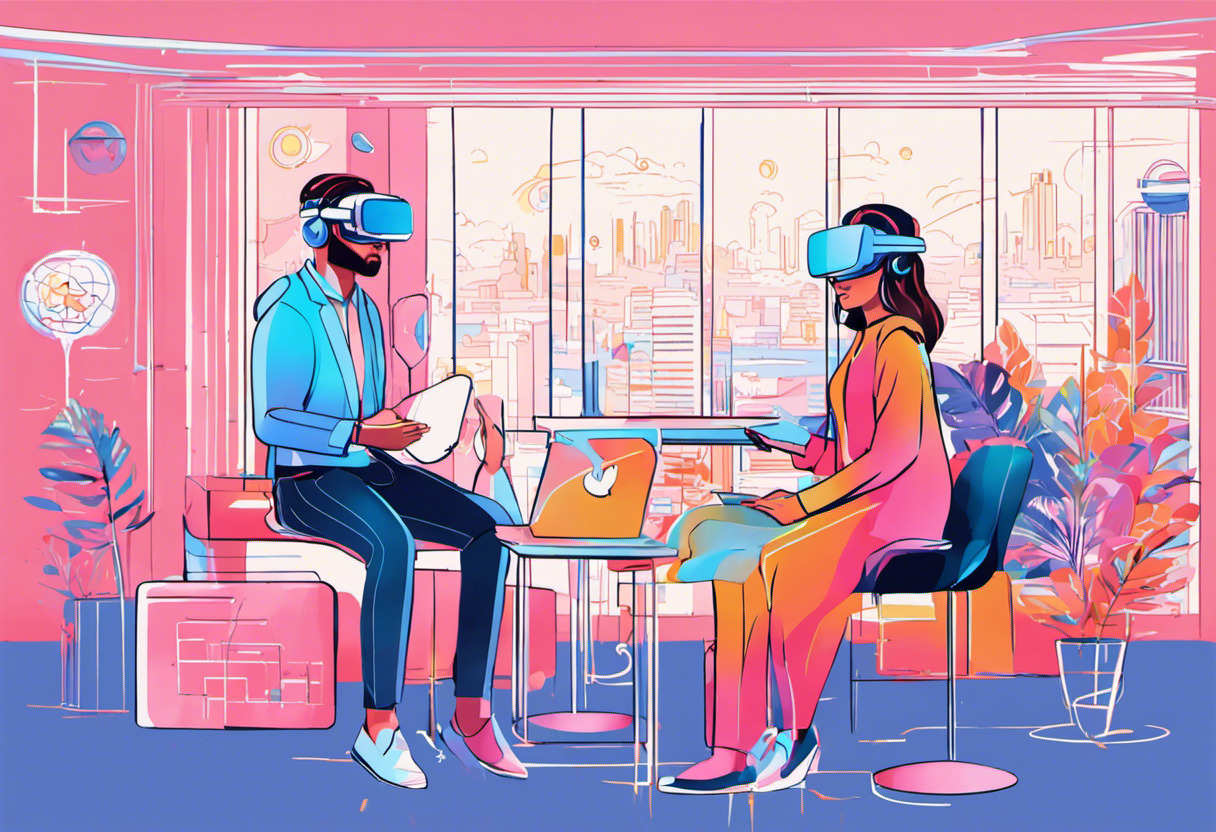
A holistic comprehension of the positive impact of the technology can be found in this exhaustive study focusing on the influence of Web AR on various industries. This guide explores this topic more thoroughly and will provide you with deeper insights into the potential of Web AR in tourism and beyond.
Hannah Stewart
Content writer @ Aircada, tech enthusiast, metaverse explorer, and coffee addict. Weaving stories in digital realms.





